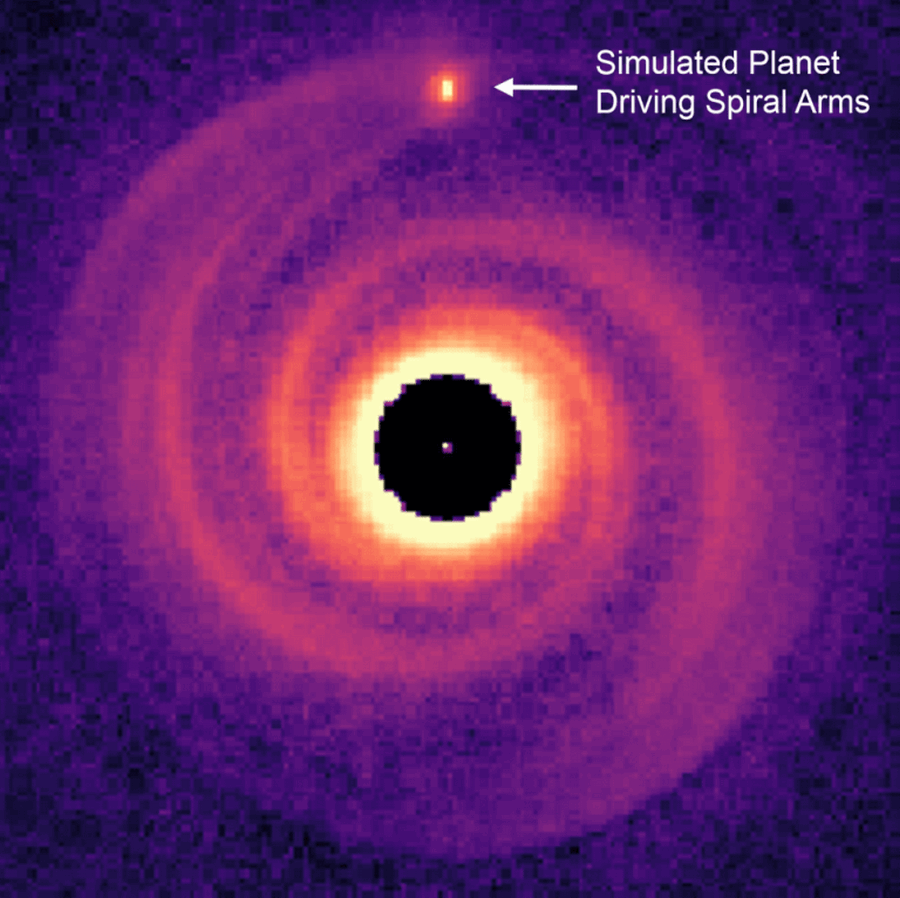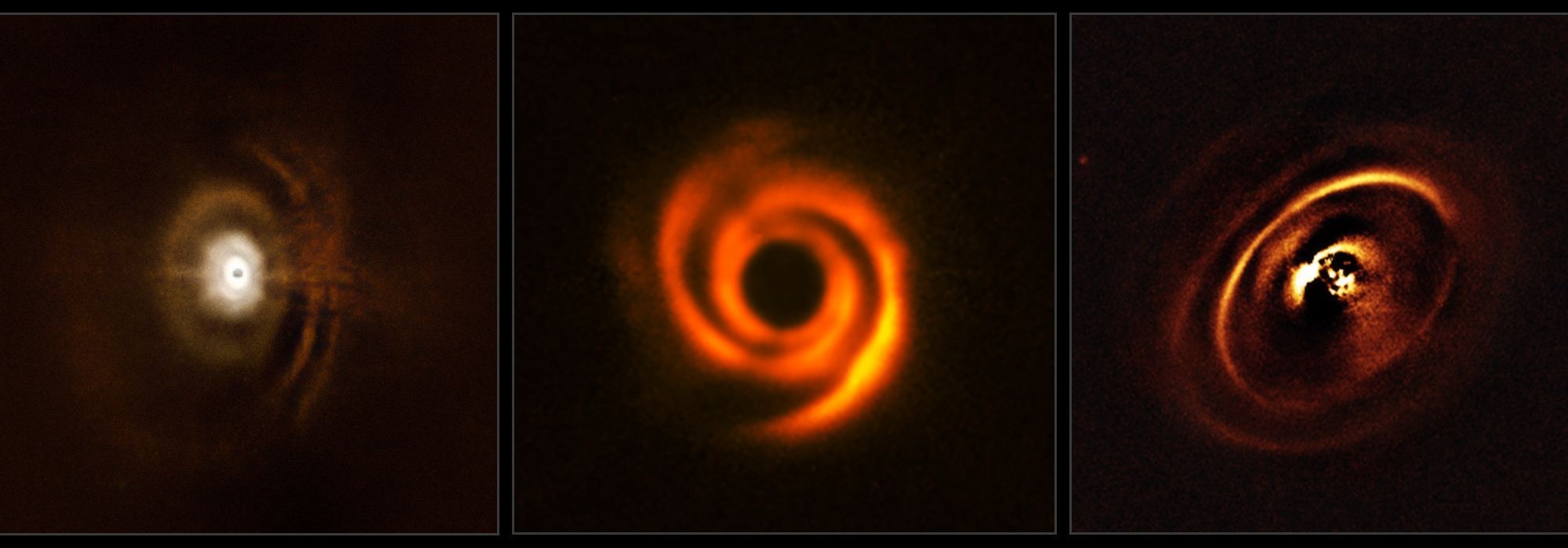When you hear the phrase “spiral arms”, you probably think of galaxies. Indeed, many galaxies have bright stellar arcs that spiral away from their center, in particular our Milky Way. However, not all galaxies have spiral arms. And galaxies are not the only celestial objects with spiral arms. About a third of protoplanetary disks around young stars have similar spiral arms. Now we have an idea of the cause of this phenomenon.

In galaxies, spiral arms arise due to density waves inside the galactic disk. These density waves create a kind of traffic jam, as a result of which individual stars move in and out of spiral arms, but the overall spiral structure remains. The spiral structure is also supported by a higher density of gas and dust in the arms, which contributes to the formation of stars inside the arms.
Similarity to galaxies
Protoplanetary disks have a similar structure to young galaxies. Both of them are a flat disk of gas and dust orbiting around a massive central protrusion. However, the difference in scale and age means that we cannot simply claim that spiral arms in galaxies and planetary disks have the same origin.
One of the models of planetary disk spirals suggests that they form like spiral galaxies. In fact, the gravitational instability inside the disk causes density fluctuations that rapidly evolve into a spiral structure. The problem with this hypothesis is that, unlike galaxies, where stars interact only gravitationally, the gas inside the disk creates pressure that destroys the spiral structure.

Another theory is that the spiral structure arises from the presence of a large protoplanet. An object the size of Jupiter inside a planetary disk can create turbulence and gravitational pressure, which causes the formation of spiral arms, like waves in a pond. The only problem with this theoretical idea is that large protoplanets have never been seen inside a spiral protoplanetary disk. At least until now.
First giant protoplanet
Astronomers have found a Jupiter-sized protoplanet orbiting a young star known as MWC 758, located about 500 light-years from Earth. This planet, called MWC 758c, has a mass greater than Jupiter and orbits a young star at a distance of about 100 astronomical units, which is three times the distance from the Sun to Neptune. The spiral disk system has been known for a long time, but preliminary observations have not found any signs of a planet. This is because MWC 758c has a particularly red color, which means that it is either very cold or covered with a significant amount of dust. Low wavelengths in the red spectrum are difficult to observe with terrestrial telescopes due to the thermal noise of the atmosphere. To finally see the gas giant, a Large Binocular Telescope Interferometer (LBTI), specialized in infrared observations, was used.
The team plans to supplement ground-based observations with observations from the James Webb Space Telescope. This will provide even more detailed images that will help to understand the process of planet formation and the interaction between the planet and the spiral structure of the system.
The MWC 758 system was formed only a few million years ago, but in other aspects it is similar to our Solar System. There is a possibility that the protoplanetary disk of the Sun also had a similar spiral structure, which played an important role in the formation of the Earth.
Earlier we reported on how ALMA captured a young protoplanetary disk with spiral arms.
According to Universe Today
Follow us on Twitter to get the most interesting space news in time
https://twitter.com/ust_magazine
